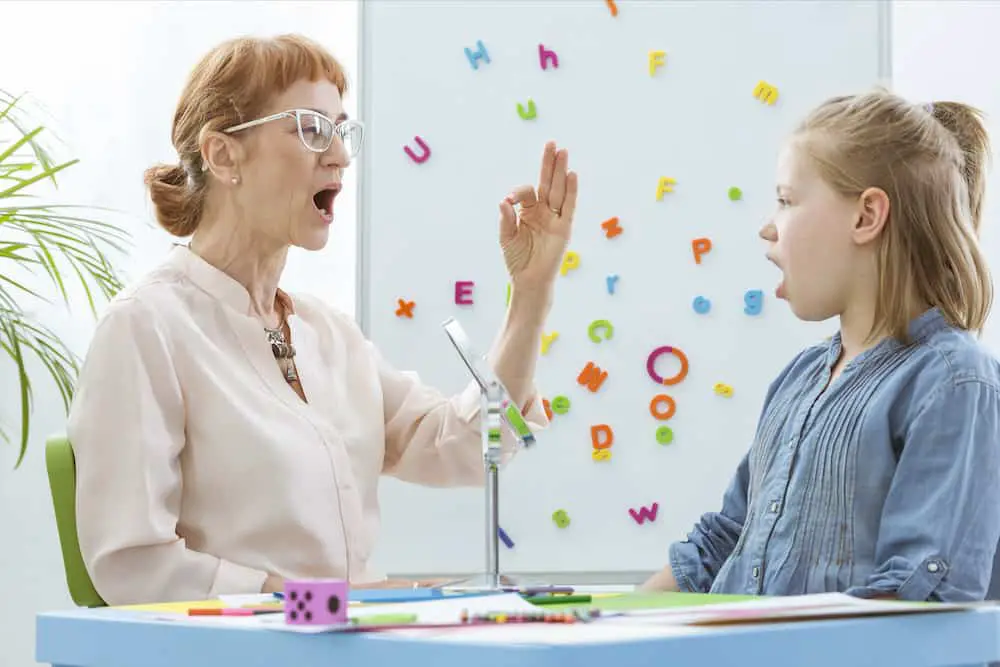By the age of seven, most children can break words down into syllables and phonemes.
Learning about syllables is an important step that your child must master when learning to read longer and more complex words.
There are various ways to help your child develop phonological awareness at home, and one is via multisyllabic words speech therapy.
Syllabication activities can help your child achieve their multisyllabic word goals.
Keep reading to find out how to teach multisyllabic words, as well as some fun multisyllabic words activities you can engage your kindergarten-aged children in.
Multisyllabic Words Speech Therapy
Around half of four-year-old children can already recognize syllables within words.
Mastering syllables will not only help your child read, but it will also help enormously with spelling and comprehension.
How To Teach Multisyllabic Words
When teaching multisyllabic words, your child should first master how to recognize a syllable within a word.
Recognizing Syllables
If your child struggles to recognize different syllables within a word, then have them hold their hand under their chin as they say the word.
Their chin will touch their hand at each syllable, syl-la-ble, to help them count out the different sounds in words more easily.
Clapping Syllables
Once they have a slightly better grasp of what syllables are, you can clap along with the syllables within different words.
Have a list of simple, single, multisyllable words ready for practice.
Try to stick to using words that they already have in their vocabulary.
Two syllable words you might use for clapping syllables include yellow, kitten, cactus, winter, picnic, puppy, tractor, window, and chicken.
For three syllable words, you may use: fantastic, December, dinosaur, afternoon, elephant, and ladybug.
But don’t forget to throw some single-syllable words in there, too, so they can count the difference.
Separating Syllables
Later on in your child’s education, you might want to teach syllables using structural analysis, namely prefix, stem, and suffix.
Still, syllable division is a simpler introduction to syllables for younger children.
There are six syllable types in total, but we usually teach two types, open and closed syllables, at kindergarten age.
Just like when you’re teaching phonics, you use the word igloo over ice; you also need to limit the multisyllable words you use as examples.
That because there are lots of exceptions to the rules that they’re just not ready for yet.
Open and Closed Syllables
Before teaching them basic syllable division, establish that they know the difference between open and closed syllables.
- Open Syllables: These end in vowels and have a long vowel sound; words like “he”, “no”, and “hi”.
- Closed Syllables: These end in consonants and have a short vowel sound; words like “hem”, “cat”, and “sun”.
Once they understand how to pronounce single syllables like this, they can start reading slightly longer words that have been broken down into parts.
If you’re helping them read a book, always have a whiteboard or pen and paper with you so you can break down multisyllabic words for them.
Then when they’re ready, you can teach them how to break them down by themselves.
Syllable Division Patterns
Start by having them circle all of the vowels or vowel graphemes within the word and tell you what they are.
It will help them identify how many sounds or syllables they should expect when reading the word out loud.
- First Pattern: VCCV
The first syllable division pattern to look out for is a vowel, followed by two consonants and another vowel.
You split these patterns between the two consonants (VC-CV), for example, fan-tas-tic and hap-pen.
Have them split words that contain this pattern into sections by drawing a line in the space between where two consonants appear together.
When they come across blended consonants, like th, sh, and ch, they should count them as one consonant.
Simple words to start with include compound words, like sunset, bathtub, and pigpen.
- Second and Third Patterns: VCV
The other two patterns to look out for involve only one consonant (VCV), so the line will go either before the consonant or after.
They will only be able to figure out where it goes by sounding the word out both ways to see if they recognize it.
Sample words you could use for this include trav-el or tra-vel, and rob-ot or ro-bot.
Encourage them to try VC-V first every time, and then if they don’t recognize the word, try V-CV.

Multisyllabic Words Activities
If you want your child to enjoy learning, then it’s important to make your syllabication activities fun and engaging.
Separated Syllables Game
We call this the silly syllables game in our house, and you can make your very own “silly” or separated syllables game together with your child.
This activity will combine learning, crafts, play, and practice, all in one go!
Start by separating a list of two-syllable words into separate syllables together (as above).
You can do this either on a piece of paper or on a blackboard or whiteboard.
You can do the first few and then encourage your child to try the others.
Once you’ve worked out how all of the words separate, write them out clearly on pieces of card, leaving small gaps between the letters.
Then have your child cut them into pieces so that each piece has one syllable written on it.
Keep the first syllables in a separate pile from the second syllables and give each pile a good mix-up.
Once all of the syllables are cut out and shuffled then you’re ready to play.
How To Play
- Lay all of the syllable cards face down on the floor, keeping the first syllables separate from the second syllables.
- Each player takes it, in turn, to turn one syllable over from each pile.
- Then they have to say the “word” it makes out loud.
- If this is a real word, they get to keep the cards, and if not, they must turn them back over for the next player to have a turn.
- The player with the most sets of cards at the end wins the game.
How To Make this Game Easier
To make this game easier, adjust the gameplay so that each player has their first syllable and just needs to find the second syllable that matches it.
Once matched, then they are dealt a second syllable and so on.
How To Make this Game Harder
To make this game more challenging, you can use three-syllable words.
To make it really hard, you can play with two and three-syllable words at once.
If the word doesn’t sound right with two syllables, maybe it will with a third one?
A Variation to Incorporate Movement
If your child is getting fidgety, then it’s time for some movement.
- Stick one set of syllables, either all of the first syllables or all of the second syllables, in different locations around the room.
- Give your child one of the matching syllables and start a timer.
- Have your child stick it up next to the correct matching syllable to make a word and then run back to you so you can pass them another one.
- Stop the timer when all syllables are matched correctly.
You can play this with a group of children where they all get one syllable each, and it’s a race to see who can make their match first.
Practice Playing
Children love to play games, compete, be timed, and they also love to move!
Instead of clapping your multisyllabic words together, why not have them jump up and down?
Take your lesson outside, draw a ladder on the floor and then have them jump from one rung to the next for each syllable they count.
Every small change you make will help keep the lesson more interesting for them.
Multisyllabic words speech therapy can be really fun for your child when you have a few games and activities up your sleeve.
We hope that you find these ideas and activities useful and, most importantly, have fun playing them!
Related: Bilingual Speech Therapy

